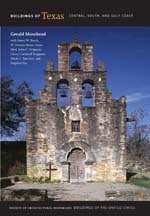
The Yturri-Edmunds house provides a fine glimpse into the sort of farmsteads that were once common along the riverbanks of the city. Significantly, this small one-story adobe residence with its full-length front porch and standing-seam metal roof is one of the few examples of this Spanish colonial type to survive. It features a triple-pen plan with no common spaces, such as halls, to join the three main rooms, originally a parlor, music room, and bedroom, all with exterior doors. The parlor and music room sit directly over the millrace that was part of the irrigation system for the nearby eighteenth-century Spanish missions. Sometime before 1898, a lean-to addition was erected along the western wall of the house. A native of northern Spain, the prominent merchant Manuel Yturri de Castillo acquired this agricultural property from Mission Concepción after it was secularized during the early 1820s. The property remained in the family until 1961 when Yturri's granddaughter, Ernestine Edmunds, bequeathed it to the San Antonio Conservation Society. The property is open to the public by appointment.

